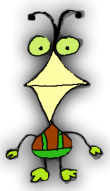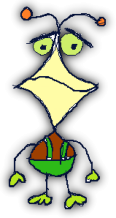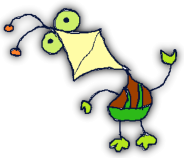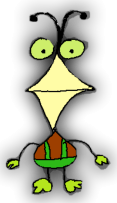Saturn captures the imagination with its system of rings. We now know the rings of Saturn are not the only
such structure to be found in the solar system. Jupiter, Uranus, and Neptune all have ring particles orbiting
them. It's just that the rings of Saturn can be seen with even a relatively small telescope by observers here
on Earth. I am always delighted and amused by my guests' first view of this gas giant through my telescopes.
Yes, you can easily see the rings, and that fact continues to astonish these viewers.
Over the past thirty years, our knowledge of Saturn has increased tremendously with the data returned by numerous probes.
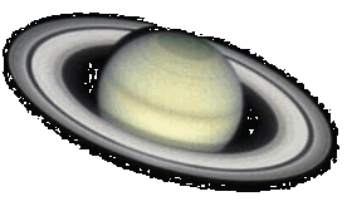


The equatorial radius of Saturn is 60,000 km.
This makes the planet 9.5 times larger than Earth.
Saturn’s not round!
Saturn spins in 10h 14m at the equator. But different parts
of Saturn rotate at different speeds. This is typical of the
gas giants.
The planet is visibly flattened by its high rate of rotation.
Semi-Major Axis
9.5 A.U. Sunlight at Saturn is about ninety times weaker than
on Earth (you square the distance)
Orbital Period
29 years Saturn spends about two years in each of the twelve
zodiacal constellations.
It’s a gas!
Saturn has a deep gaseous layer of mainly hydrogen
and helium gas.
There is a slight amount of other,
more exotic compounds.
Deeper inside, there are likely to be layers of liquid
metallic hydrogen and, perhaps, a semi-solid core.
Like Jupiter, but not.
Though not as strong as Jupiter’s, Saturn’s magnetic field
is still significant. It is thought to be generated by a layer
of the interior consisting of liquid metallic hydrogen.
Radiation zones surround the planet, but not to the
same extent as Jupiter.
Does this Belt go with my Zones?
Dark belts alternate with bright zones, but they are much
harder to see on Saturn than on Jupiter, due to a high layer
of icy haze.
Really big, and really small
Saturn has dozens of moons. Titan dominates the
collection with the rest being smaller icy moons. The
intermediate moons of Saturn may give us some idea of the
appearance of the Kuiper Belt objects of the outer solar system.
Some of the remaining moons might be captured comets or
minor planets. Within the ring system, we see shepherding
moons.
Trillions of Snowballs
The
rings
of
Saturn
were
a
mystery
at
first
.
The
famous
ring
system
is
composed
of
'
snowballs
'.
Here
is
a
painting
that
shows
what
it
might
look
like
within
the
rings.
A
movie
shows
the
strange
spokes
in
the
rings.
Saturn’s
ring
,
consists
of
snowball-sized
ice
particles
probably
the
result
of
a
destroyed
moon.
We
have
labeled
different
portions
of
the
rings
based
on
their composition and density.
Here
is
a
nice
diagram
of
the
ring
system
and
Saturn’s
moons.








